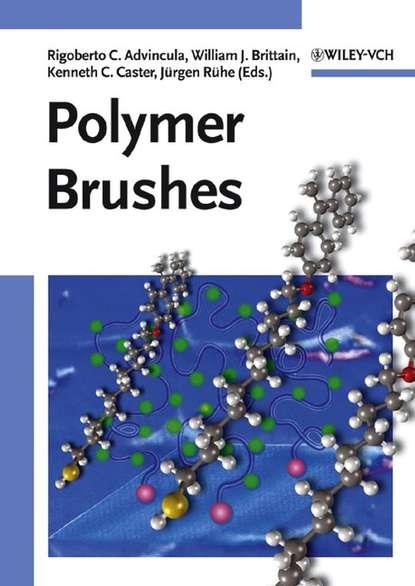Книга "Полимерные щетки" представляет собой полное и детальное руководство для ученых в области науки о материалах, полимерных химиков, физиков поверхности и инженеров по материаловедению. В первом разделе вводятся и объясняются различные синтетические пути и разные поверхностные материалы. Во втором разделе рассматриваются важные аспекты характеризации и анализа как плоских поверхностей, так и частиц. Эти специфические системы поверхностной инициированной полимеризации (SIP), такие как линейные полимеры, гомополимеры, сополимеры и разветвленные полимеры, уникальны по сравнению с ранее описанными системами хемосорбции или физисорбции. Они нашли применение как в крупномасштабных, так и миниатюрных приложениях полимерных щеток, о чем рассказывается в последнем разделе. Такие "волосатые" поверхности предлагают захватывающие возможности для решения многочисленных задач, представляющих как академический, так и, в частности, промышленный интерес: высококачественные, функциональные или защитные покрытия, композитные материалы, инженерия поверхности частиц, металлоорганические интерфейсы, биологические приложения, микроструктурирование, коллоиды, наночастицы, функциональные устройства и многое другое. Авторы надеются, что эта книга будет полезна читателям, которые хотят "подтянуть свои знания о полимерах".
Authors: Kenneth C. Caster Chemical research scientists, chemical polymerists, physicists of surfaces and material engineers shall find this volume of complete hanbook and detail with respect to the compass of exploration into polymer brushes – their synthesis, reference and ample application areas. On the initial essay line, there are numerous groundings for synthetic traveling paths and diverse surface products that are explained and presented; followed up by another part with a survey of crucial aspects of reference and analysis both for plain surfaces as well as for particles. These surface triggered polymerization specific systems (linear polymers, single-unit polymers, block polymers and embodied polymers) are to initially distinguish compared with previously taken systems through chemisoposition and physical adsorption. They penetrate not only big-scale but equally miniature application styles of polymer brushes; this is explored in the final part. With such ‘hairy’ surfaces, you come across marvellous possibilities for addressing innumerable tasks of both acadmic and – specially – industrial actuality: high quality, functionalizer protection coatings, combined materials, computerized particle design, organic metal face, biologic utilization, microscopic patterning/engraving, colloidal divisions, nanoparticle matters, electronic gadgets,and a good number more. The protagonists have the intent that this work of literage will be helpful for the readers who seek to “brush-create with polymers“.
В этой книге исследуются различные аспекты полимерных аппликаторов, их создание, анализ и применение в кинетике поверхности, материалах для обработки поверхностей и многих других областях.
Электронная Книга «Polymer Brushes» написана автором Kenneth Caster C. в году.
Минимальный возраст читателя: 0
Язык: Английский
ISBN: 9783527604999
Описание книги от Kenneth Caster C.
Materials scientists, polymer chemists, surface physicists and materials engineers will find this book a complete and detailed treatise on the field of polymer brushes, their synthesis, characterization and manifold applications. In a first section, the various synthetic pathways and different surface materials are introduced and explained, followed by a second section covering important aspects of characterization and analysis in both flat surfaces and particles. These specific surface initiated polymerization (SIP) systems such as linear polymers, homopolymers, block copolymers, and hyperbranched polymers are unique compared to previously reported systems by chemisorption or physisorption. They have found their way in both large-scale and miniature applications of polymer brushes, which is covered in the last section. Such 'hairy' surfaces offer fascinating opportunities for addressing numerous problems of both academic and, in particular, industrial interest: high-quality, functional or protective coatings, composite materials, surface engineered particles, metal-organic interfaces, biological applications, micro-patterning, colloids, nanoparticles, functional devices, and many more. It is the desire of the authors that this book will be of benefit to readers who want to «brush-up on polymers».



















